Overseeding is the process of spreading grass seed across an existing lawn without tearing up the turf or soil. It is commonly used to restore bare spots, thinning turf or patchy grass while also improving density and enhancing color in cool-season grasses.
Preparing your lawn before overseeding is key, since new seeds need soil contact, steady moisture and the right conditions to grow. Cutting the grass shorter, loosening the soil through aeration and applying fertilizer all help seeds settle in, absorb nutrients and sprout successfully. Taking these steps can be the difference between a thin, patchy lawn and a thick, green carpet
Pro tip: Overseeding is most effective when combined with aeration. Aeration creates small holes in the soil, improves air and water movement and gives grass seed excellent seed-to-soil contact. This helps seeds germinate faster and grow stronger.
Step 1: Assess Your Lawn’s Condition
Start by taking an honest look at your lawn. Overseeding works best if your grass is thinning or has bare spots but still has at least 50 percent healthy turf. If weeds dominate or the soil is compacted, overseeding alone won’t solve the problem. You may need weed control or aeration first.
Seasonal timing makes a big difference. For cool-season grasses like Turf-Type Tall Fescue, Rye and Kentucky Bluegrass, early fall is the best time to overseed. Warm soil encourages germination, while cooler air temperatures reduce stress on young seedlings. By contrast, overseeding warm-season grasses is generally not recommended, as they don’t respond well to the process. In those lawns, aeration during the summer months can still improve soil health, but adding seed won’t deliver the same results
Step 2: Mow Lower Than Usual and Remove Debris
Before overseeding, mow your lawn shorter than usual, about 1.5 to 2 inches for cool-season grasses. This prevents existing turf from shading new seedlings and helps grass seed reach the soil surface.
After mowing, rake up all clippings, leaves and debris. If your lawn has a thick thatch layer, the spongy layer of organic matter between soil and grass, remove it with a dethatching rake or power dethatcher. Skipping this step reduces seed-to-soil contact and lowers germination rates.
Step 3: Improve Seed-to-Soil Contact
Grass seed germinates best when it has direct contact with soil. Aeration is one of the most effective ways to achieve this. Aeration creates small holes in the ground, relieves compaction and allows air, water, nutrients and seed to reach the root zone.
If your lawn has heavy thatch or compacted clay soil, core aeration before overseeding makes a big difference. In some cases, slit seeding, where a machine slices into the soil and drops seed into the grooves, provides even better results.
TruGreen difference: TruGreen only selects high-quality seeds with excellent purity and germination potential. These seeds have been tested in university trials and shown to improve drought and disease tolerance, helping your lawn stay resilient season after season.
Step 4: Test and Amend Your Soil
Healthy soil is the foundation of a thriving lawn. Before overseeding, test your soil’s pH and nutrient levels. Grass grows best in soil with a pH between 6 and 7. If your soil is too acidic, lime may be needed. If it is too alkaline, sulfur can help adjust it.
Soil tests also show whether your lawn is low in nitrogen, phosphorus or potassium. Amending your soil with TruGreen’s soil enhancer treatment before overseeding ensures your new seedlings have the best chance to develop deep healthy roots.
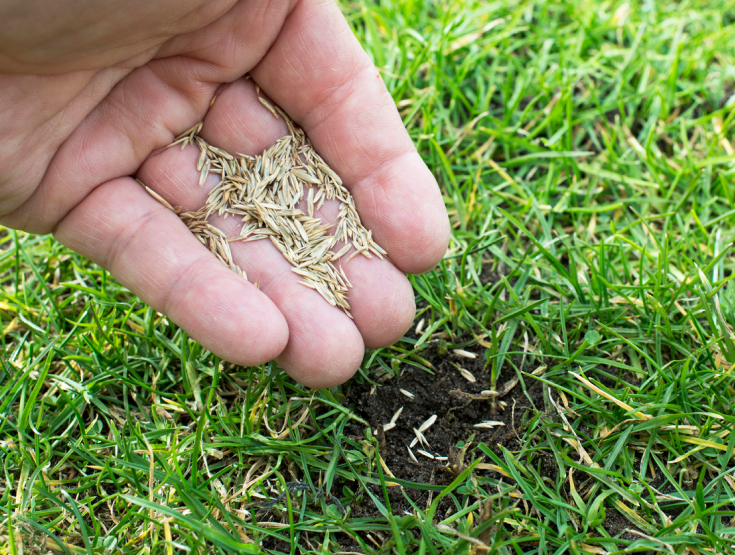
Step 5: Choose the Right Seed Blend
Not all grass seed is created equal. Your region and lawn type play a big role in determining which services your lawn needs and when.
How to Tell Which Grass Type You Have:
- Warm season grasses: If your lawn turns brown in the winter, you likely have warm season grass. These lawns benefit from aeration but not overseeding.
- Cool season grasses: If your lawn stays green in the winter, you likely have cool season grass. These lawns can benefit from both aeration and overseeding. (Unless you’re located in Central or South Florida where lawns stay green year-round. Learn more about Florida lawns in our guide to Florida grass types.)
Cool Season Grasses
- Kentucky bluegrass
- Turf-type Tall Fescue
- Perennial ryegrass
- Best timing: Aeration and overseeding are recommended in late summer to fall. Overseeding is typically performed once a year.
Warm Season Grasses
- Bermudagrass
- Zoysiagrass
- St. Augustinegrass
- Centipedegrass
- Best timing: Aeration only in late spring to early summer. Typically performed once a year. Overseeding is not recommended for warm season lawns.
Pro Tip: Choose Improved Cultivars
Whenever possible, select high quality seed blends bred for disease resistance, drought tolerance and lasting color.
Step 6: Fertilize Smartly
Applying fertilizer during overseeding gives seedlings the nutrients they need to establish quickly. A starter fertilizer with a higher phosphorus content supports strong root growth.
Spread fertilizer just before or immediately after seeding. Avoid using standard high-nitrogen lawn fertilizer during this stage since it may push top growth before roots are ready.
Step 7: Water Wisely
Watering is one of the most important steps after overseeding. The goal is to keep the soil consistently moist without washing seeds away.
- Initial stage: Water lightly two to three times per day for the first 7 to 10 days to keep the top inch of soil damp
- Germination stage: Once seedlings sprout, reduce frequency but increase depth. Aim for 1/4 to 1/2 inch of water per session
- Establishment stage: After 3 to 4 weeks, transition to deeper less frequent watering to encourage strong root development
Overwatering can suffocate seeds or cause disease, while underwatering will stop germination. Finding the right balance is key.


 Branch Finder
Branch Finder





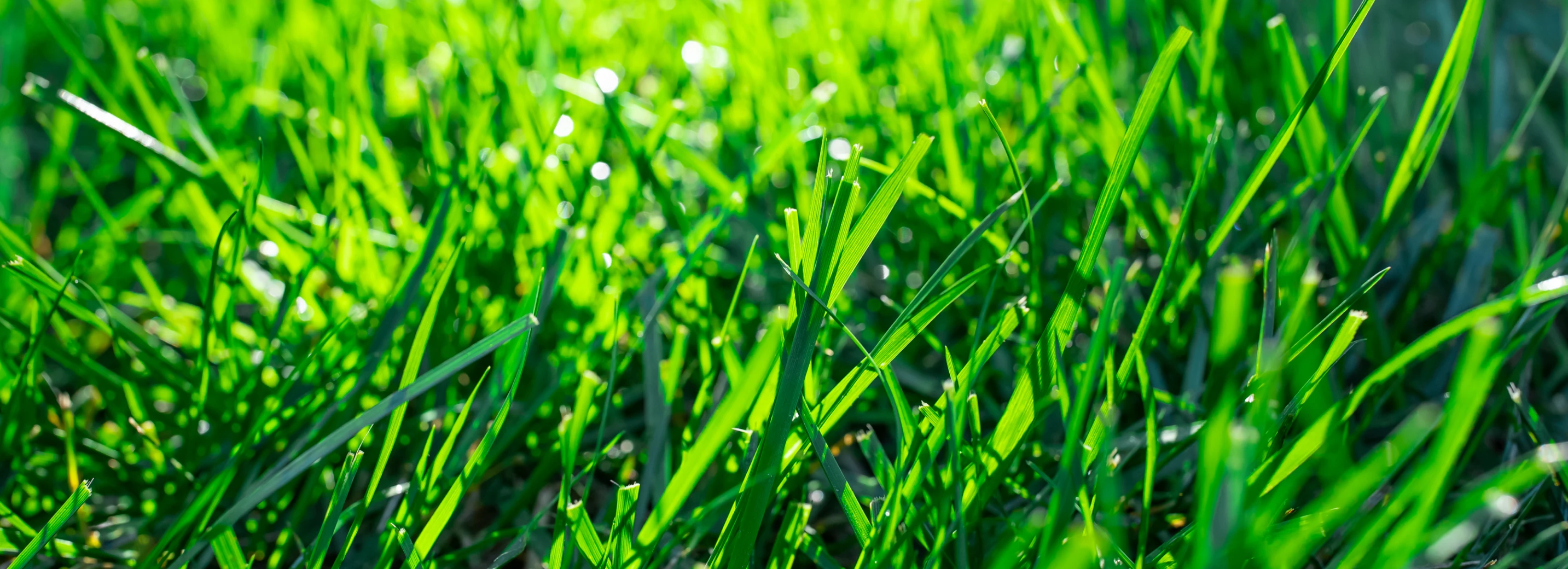




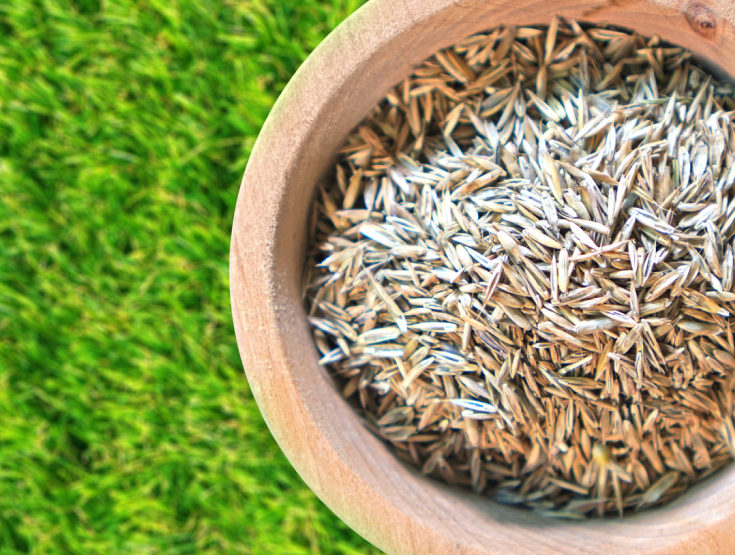

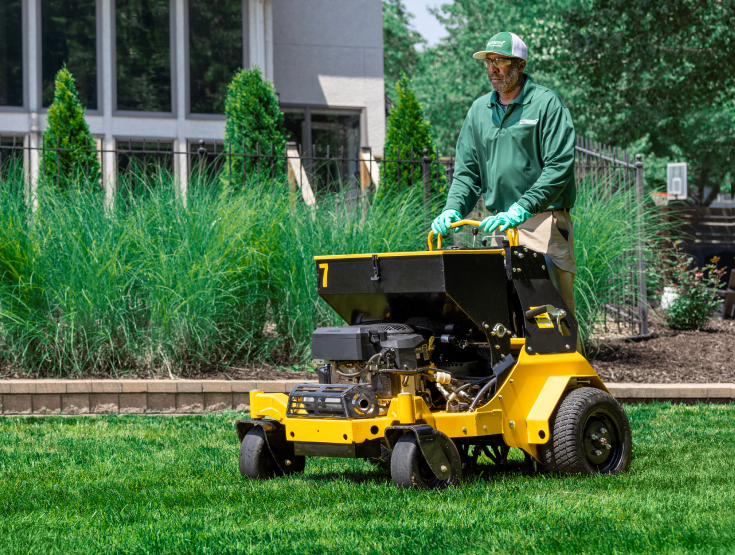
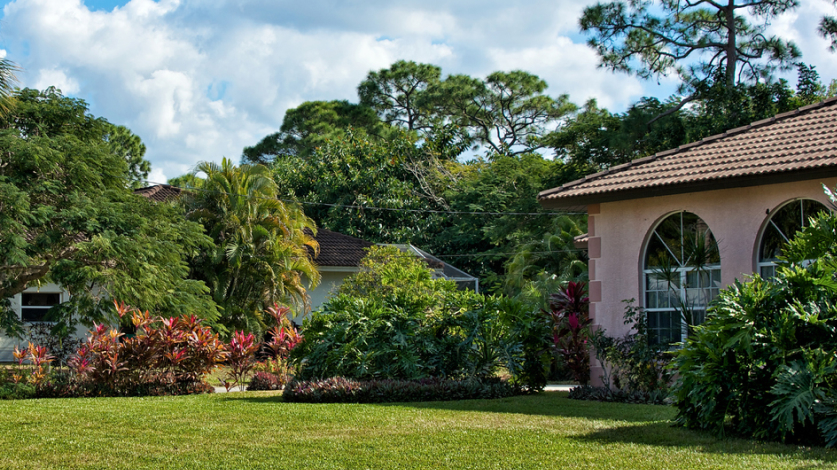


 Back to all blogs
Back to all blogs

Facebook
X
Youtube
Copy Link
Email